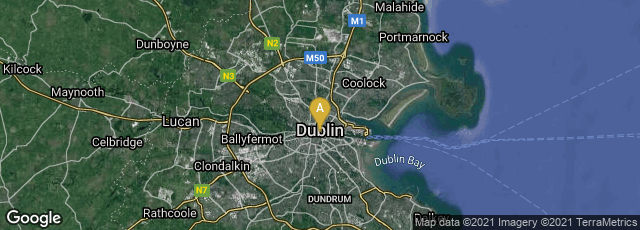

A: Dublin 1, County Dublin, Ireland
On July 20, 2006 a 1,200-year-old Book of Psalms was found by a construction worker in a bog in Ireland. This was the first discovery of its kind in 200 years.
"Fragments of what appear to be an ancient Psalter or Book of Psalms were uncovered by a bulldozer in a bog in the south Midlands. It is impossible to say how the manuscript ended up in the bog. It may have been lost in transit or dumped after a raid, possibly more than a thousand to twelve hundred years ago." The Director of the National Museum of Ireland, Dr. Pat Wallace, commented that "it is not so much the fragments themselves, but what they represent, that is of such staggering importance. In my wildest hopes, I could only have dreamed of a discovery as fragile and rare as this. It testifies to the incredible richness of the Early Christian civilization of this island and to the greatness of ancient Ireland." The find has even been compared with that of the Dead Sea Scrolls. The pages recovered appear to be those of a slim, large format book with a wraparound vellum or leather cover from which the book block has slipped. Raghnall Ó. Floinn, Head of Collections at the Museum, estimates that there are about forty-five letters per line and a maximum of forty lines per page. While part of Ps 83 is legible, the extent to which other Psalms or additional texts are preserved will only be determined by painstaking work by a team of invited experts probably operating over a long time in the Museum laboratory. Dr Bernard Meehan, Head of Manuscripts at Trinity College Dublin, has seen the discovery and has been invited to advise on the context and background of the manuscript, its production, and its time. He reckons that this is the first discovery of an Irish Early Medieval manuscript in two centuries. Initial impressions place the composition date of the manuscript at about 800 AD. How soon after this date it was lost we may never know" (http://sbl-site.org/publications/article.aspx?articleId=568, accessed 01-27-2010).
The manuscript was subsequently named the Faddan More Psalter or Faddan Mor Psalter, after the town of Faddan More in North Tipperary, Ireland, where it was found.
In September 2010 the National Museum of Ireland, Dublin, issued a Press Release on its website indicating that in the process of restoration of the manuscript and its binding "fragments of papyrus were dramatically discovered in the lining of the Egyptian-style leather binding. This potentially represents the first tangible connection between early Irish Christianity and the Middle Eastern Coptic Church. It is a finding that asks many questions and has confounded some of the accepted theories about the history of early Christianity in Ireland"